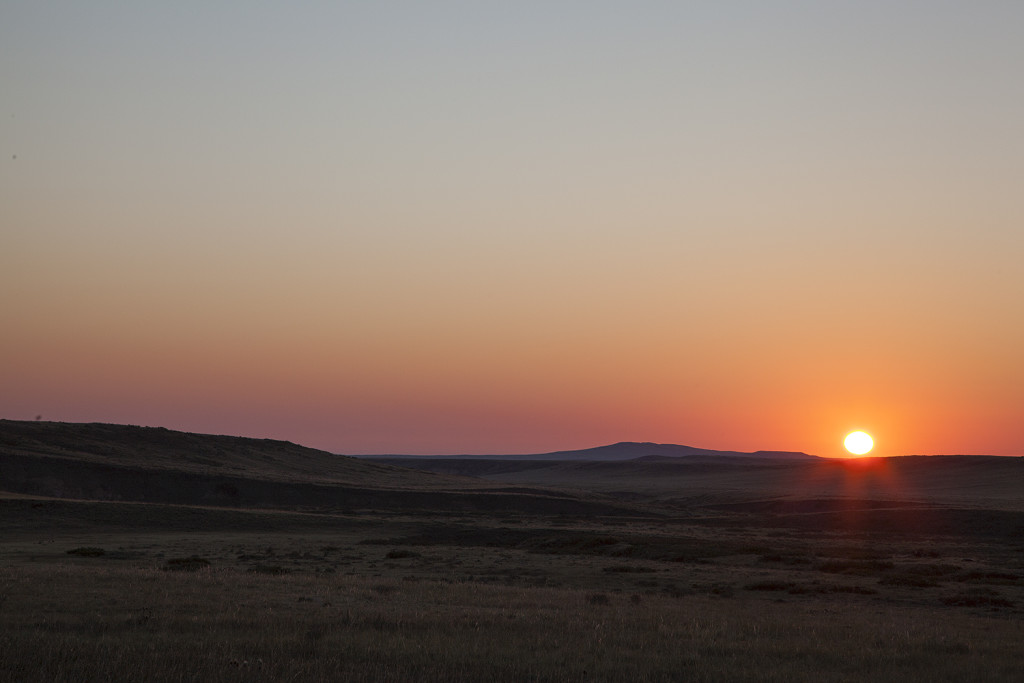 THE TALE OF HUGH GLASS AND THE GRIZZLY IS ONE of the most treasured stories in the mythology of the mountain man. Most of the best parts understandably come down to us by word of mouth, since Glass was alone during the legendary crawl and never wrote a word about the experience.
THE TALE OF HUGH GLASS AND THE GRIZZLY IS ONE of the most treasured stories in the mythology of the mountain man. Most of the best parts understandably come down to us by word of mouth, since Glass was alone during the legendary crawl and never wrote a word about the experience.
However, there are a few generally accepted facts that ground the story: Glass met the grizzly around August 23, 1823, on the Grand River near what is now the border between North and South Dakota. It took him a month and a half to make his way back to Fort Kiowa, an American Fur Company outpost on the Missouri River near what is now Chamberlain, South Dakota. There had been two serious fights with the Arikara earlier that summer, the first in June involving the men of the Rocky Mountain Fur Company; the second, a retaliatory strike led by Colonel Henry Leavenworth and the Sixth Infantry. There was also a skirmish with the Mandans on the Grand River.
As Kevin Bacon said in “A Few Good Men,” “These are the facts of the case, and they are not disputed.”
Like many aficionados of western history, I’ve always admired the Hugh Glass story, and like many fans of Hollywood, I looked forward to Alejandro Iñárritu’s film adaptation, “The Revenant.”
Well, I’ve seen it. I have to give a nod to Leo DiCaprio, who may well deserve an Academy Award for his work in the film, for raw endurance, if nothing else. There is some exquisite photography of marvelous landscapes.
But about those landscapes. Many of us with an affection for the West had hoped that Hollywood had finally outgrown the need to set every film with a western theme in Jackson Hole or Monument Valley. Kevin Costner showed the way in “Dances with Wolves,” a film about the High Plains actually filmed in the grassland wilderness of the High Plains.
Iñárritu couldn’t decide where to place Hugh Glass in “The Revenant.” Anyone with the slightest grasp of western geography is likely to get whiplash as scenes jump from snowbound mountain passes to dense coniferous forests and then, for three minutes or so, onto the grasslands before returning to the mountains. Glass was mauled on the High Plains; he crawled 200 miles across the High Plains to get back to Fort Kiowa, an encampment on the Missouri River in the heart of the Great Plains. None of the forts of that time— Fort Henry, Fort Tilton, Fort Kiowa— were in the high mountains. They were all in or near major rivers like the Missouri or the mouths of the Yellowstone and Big Horn. Grassland settings.
Iñárritu couldn’t even decide WHEN his story took place. Near the beginning of his version, Glass and his companions have already seen major snowfall— winter is coming on. Glass is mauled by a sow grizzly with two cubs that should be half the size of their mother by late fall; instead, the two youngsters are about the size they would be in May.
It looks a lot like winter as DiCaprio’s Glass crawls out of his shallow grave and heads for Fort Kiowa with a broken leg and deep lacerations. There are no bugs, precious few berries— in short, no food for a man who is unarmed and all but immobilized. No flies to lay eggs in the festering wounds so that the maggots can clean the injuries and keep Glass from dying of infection or blood poisoning.
I can accept certain embellishments to the traditional Hugh Glass story— giving Glass a son by a Pawnee woman, inventing an Arikara chief who is searching for his kidnapped daughter, twisting the end by allowing Glass to kill Fitzgerald— but was it really necessary to make the crawl even more difficult than it really was? I guess being abandoned without firearms or a horse 200 miles from the nearest help with a broken leg and multiple puncture wounds and lacerations wasn’t a big enough challenge. Iñárritu just had to spice it up a little.
If Iñárritu didn’t want to take the time to research the story or visit the places where it happened, he could have hired somebody to do the digging. As it is, he turned what might have been an engaging piece of historical fiction into a fantasy of violence. “The Revenant” reminds me of “A Clockwork Orange.” It could have been something much better.
Leave a Reply
You must be logged in to post a comment.